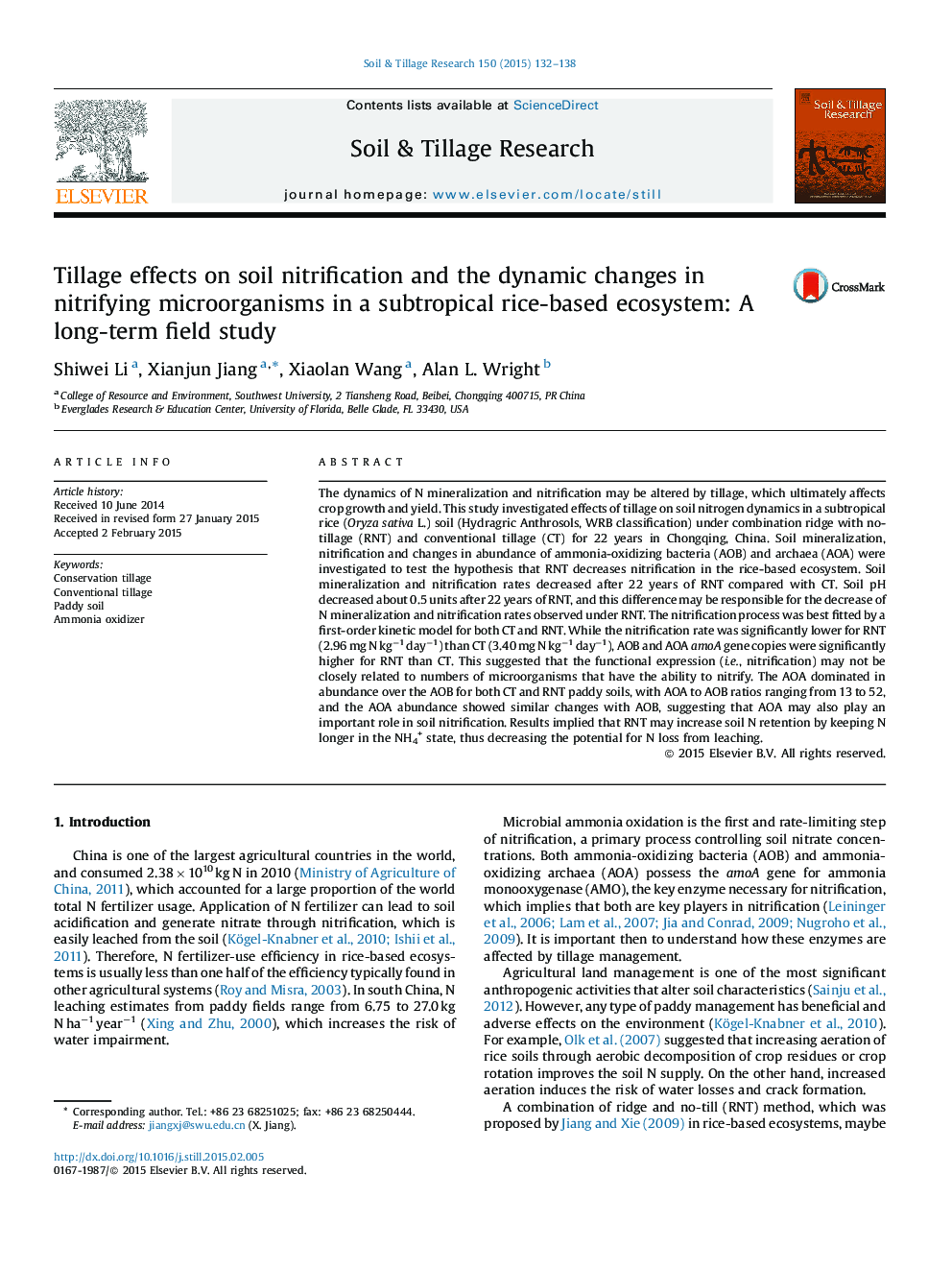| Article ID | Journal | Published Year | Pages | File Type |
|---|---|---|---|---|
| 305574 | Soil and Tillage Research | 2015 | 7 Pages |
•The soil nitrification process was slowed down by combination ridge with no-tillage.•The nitrification dynamics was not changed by tillage management.•Ammonia-oxidizing archaea dominated in abundance over the ammonia-oxidizing bacteria.•Ammonia-oxidizing archaea showed similar changes with ammonia-oxidizing bacteria.
The dynamics of N mineralization and nitrification may be altered by tillage, which ultimately affects crop growth and yield. This study investigated effects of tillage on soil nitrogen dynamics in a subtropical rice (Oryza sativa L.) soil (Hydragric Anthrosols, WRB classification) under combination ridge with no-tillage (RNT) and conventional tillage (CT) for 22 years in Chongqing, China. Soil mineralization, nitrification and changes in abundance of ammonia-oxidizing bacteria (AOB) and archaea (AOA) were investigated to test the hypothesis that RNT decreases nitrification in the rice-based ecosystem. Soil mineralization and nitrification rates decreased after 22 years of RNT compared with CT. Soil pH decreased about 0.5 units after 22 years of RNT, and this difference may be responsible for the decrease of N mineralization and nitrification rates observed under RNT. The nitrification process was best fitted by a first-order kinetic model for both CT and RNT. While the nitrification rate was significantly lower for RNT (2.96 mg N kg−1 day−1) than CT (3.40 mg N kg−1 day−1), AOB and AOA amoA gene copies were significantly higher for RNT than CT. This suggested that the functional expression (i.e., nitrification) may not be closely related to numbers of microorganisms that have the ability to nitrify. The AOA dominated in abundance over the AOB for both CT and RNT paddy soils, with AOA to AOB ratios ranging from 13 to 52, and the AOA abundance showed similar changes with AOB, suggesting that AOA may also play an important role in soil nitrification. Results implied that RNT may increase soil N retention by keeping N longer in the NH4+ state, thus decreasing the potential for N loss from leaching.
